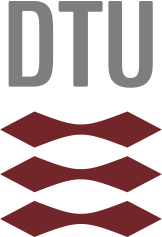SimNIBS 4.5¶
SimNIBS v4.5 is an open source software package for the Simulation of Non-invasive Brain Stimulation. It allows for realistic calculations of the electric field induced by transcranial magnetic stimulation (TMS) and transcranial electric stimulation (TES).
A basic SimNIBS workflow consists of three main parts:
Generate high-quality head models from MR images.
Set up and run simulation using our fast FEM solvers in the graphical user interface, or via MATLAB or Python scripts.
Visualize simulation results, and easily transform them to FsAverage or MNI space via in-built functions.
SimNIBS offers several advanced options such as Optimizations of TMS coil positions or several TES optimization methods. Also a number of external open-source software packages and workflows build upon SimNIBS.
SimNIBS is copyrighted © by its authors and licensed under GPL v3.
It builds upon 3rd party open-source and free code and binaries from several projects and research groups.
Note
When you publish results based on SimNIBS, please cite Thielscher, A., Antunes, A. and Saturnino, G.B. (2015), Field modeling for transcranial magnetic stimulation: a useful tool to understand the physiological effects of TMS? IEEE EMBS 2015, Milano, Italy
Please see our publications for details about the SimNIBS modules.
Warning
SimNIBS is a research tool. Clinical usage is not supported or advised. In particular, SimNIBS was not tested to give accurate results in the presence of pathological condition
News¶
Version 4.5.0 includes:
- Exciting new optimization methods for TMS and TES.
Optimization of TMS coil positions also for bent and flexible coils, thereby systematically avoiding intersections of the coil with the head.
Leadfield-free optimization of TES montages, including those with rectangular electrodes, center-surround montages, temporal interference stimulation and electrode arrays for tumor treating field therapies.
Several new TMS coil models and new datasets.
New format for TMS coil models (.tcd) that supports flexible and multi-element coils and simplifies the creation of custom coil models (example scripts are provided).
Tutorial for calculating EEG leadfields with SimNIBS for use in FieldTrip and MNE-Python .
JupyterLab to make SimNIBS scripting in Python more straightforward.
Please see details in the changelog.


